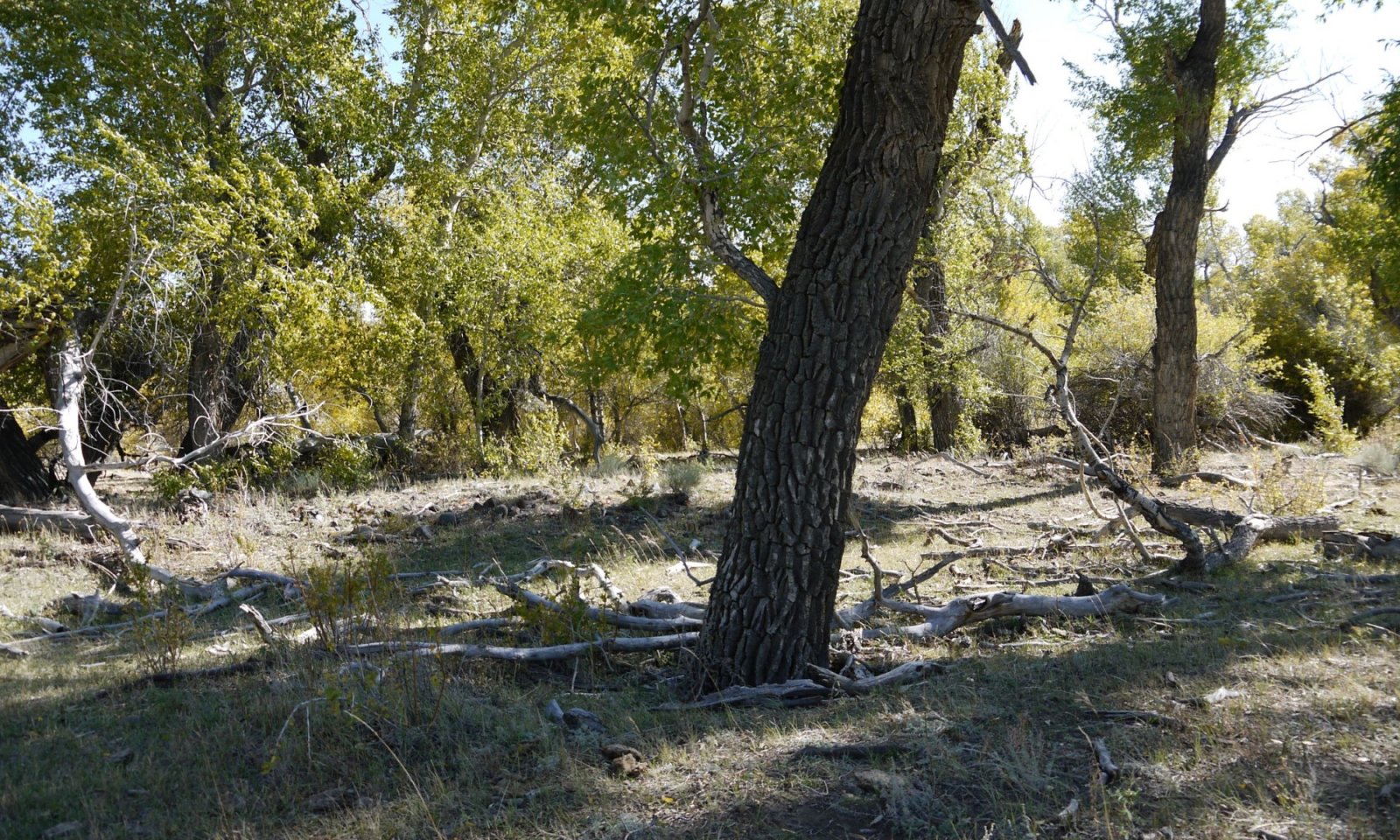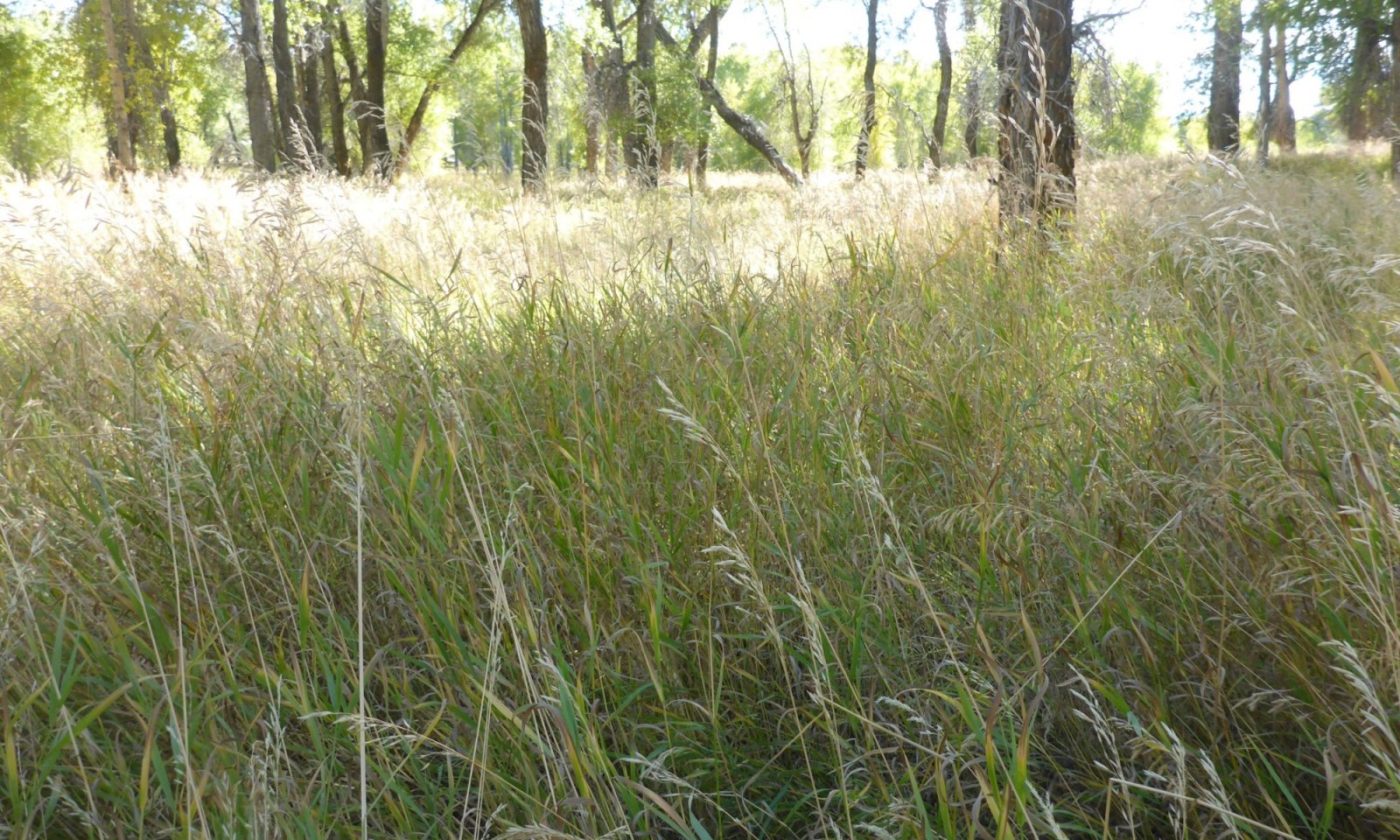
Lowland (LL) Absaroka Upper Foothills
Scenario model
Current ecosystem state
Select a state
Management practices/drivers
Select a transition or restoration pathway
-
Transition T1A
Frequent and Severe grazing plus encroachment will convert this plant community to a Invaded State.
More details -
Transition T1B
Catastrophic events, such as extensive flooding, as well as intensive grazing and recreational impacts will degrade or disturb the community.
More details -
Restoration pathway R2A
Intensive weed control, seed bed preparation to remove, tame invaders followed with seeding and grazing management will restore this community.
More details -
Transition T3A
The failure of restoration attempts as well as the lack of management leaves a restored community as well as a disturbed community open to invasion.
More details -
No transition or restoration pathway between the selected states has been described
Target ecosystem state
Select a state
State 1
Tree/Cool-Season Grasses





Description
The complexity of the Lowland ecological state, and the narrow or linear patterns of this ecological site, make it difficult to capture the full range of variability. The alterations and encroachment of non-native species has had a significant impact on these communities as well as the alteration of the hdyrologic patterns of flooding due to water control structures has further impacted this ecological site. This State is to capture the native component of the community with the major tree cover, and then the step of tree loss and transition to a dryer, more upland related community.
Characteristics and indicators
The native composition of trees, shrubs, and grasses is the indicator for this community. The presence or remnants of narrowleaf cottonwood and balsam poplar are key in this community. The understory of riparian and upland shrubs including wood's rose, gooseberry, mountain big sagebrush, and snowberry are prominent. A variety of forbs are present, and are highly variable. The grasses are cool-season grasses with tall-stature grasses dominant in Reference, moving to mid and short-stature grasses in the more at-risk communities in this state.
Resilience management
The Reference communities are fragile due to the dependence on spring flooding and infrequent fires to maintain a healthy community. The proximity to water creates a high impact to this ecological site, especially with livestock, putting these communities at risk. The Reference State is resilient to disturbances when the system is unimpaired by human interference (natural stream system). However, with water control structures, fire suppression and shifts in grazing patterns has weakened the resilience and resistance of this State.
Submodel
State 2
Invaded




Description
Increased activity on the landscapes provides more opportunity for disturbances as well as an increase of non-native species seed source. Disturbances to the soil surface and exiting canopy cover provides opportunity for non-native species to establish.
The most prevalent invader on Lowland ecological site is smooth brome and Kentucky bluegrass. The occurrence of these communities can be a process of time or of disturbance. Historic studies have documented the presence of non-native species such as Kentucky bluegrass and dandelions prior to the early 1950's. Different references list these two species as naturalized species.
Another concern is the threat of large scale weed invasions. Currently, most of the mountain has retained only small or isolated patches of invasive weeds. Areas of leafy spurge, toadflax (yellow or dalmation) and thistles have been identified. Although early detection/rapid response techniques are applied for land management, limited resources make it difficult to track all current and new infestation sites. Overall, the weed infestation level is not seen as a critical concern, but the threat is growing and being monitored closely.
Characteristics and indicators
Non-native or tame species and invasive species are a concern on the the Lowland soils. The frequent disturbance from spring flood water and fluctuating water table provide opportunity for establishment. The threshold that is crossed to indicate an invaded site is 5 percent composition by cover or by weight.
The dominant non-native/invader species are Kentucky bluegrass, smooth brome, thistles, toadflax (Dalmatian, yellow), and swanson's pea. As new species are found, this list will be adapted to include these species.
Resilience management
Non-native and invasive species are resistant to change and resilient following disturbances.
This makes a stable community that is difficult to change without significant inputs. The salt-laden soils limit the type of treatment, access, and species adapted to help recovery of the Invaded Community.
Kentucky bluegrass, smooth brome, and other non-native species have a high resiliency once they have established in a community. The management of the native species is difficult, and is dependent on what specific species composition exists in the individual community. The removal or treatment of encroaching woody species is best tackled when they occur at a low intensity, before they may be seen as a concern.
Submodel
Description
Although to a much smaller extent than in lower elevations, there are areas that have been accessed for irrigation convenience ditches or were part of a homestead. These areas have remnants of introduced species from haylands or have been left to recover and may be in varying stages of succession. There are areas that are heavily impacted by recreational vehicles, parking, trails, roadways, or other land disturbances that have reduced or removed most native perennial vegetation and left a highly disturbed land.
The Disturbed State could be drafted as a stand-alone box within the state and transition model diagram. No matter what state a site originally is ranked in, once the site is mechanically disturbed, or suffers a catastrophic or significant natural disaster that alters the soil properties (erosional, depositional, or chemical), the site potential is altered. The most prominent shift for this site tends to be a shift in the natural hydrology that is key to this site. This can include both the loss of or enhancement to the additional moisture to the site (seepage from irrigation ditches).
Mechanical disturbances and reclamation practices using non-native species could qualify some stages of this state to be considered as a land use shift. The result is the shift in potential and response in management so that it is no longer similar to the reference community. The potential shifts are highly variable, so a dynamic state was captured to highlight the altered communities that exist on the landscape.
Characteristics and indicators
The soil disturbance and mechanical or physical removal of the vegetative canopy is the key characteristic of the Disturbed State. The initial indicators are the primary successional species that establish following a disturbance including Russian thistle, kochia, and sunflowers. These initial colonizers will then be followed by any seeded species, or other species from within the locations seed bank.
Resilience management
The Disturbed State is highly variable and in a state of flux as the successional processes occur. Continued disturbance of these communities is a potential threat; and the communities are at high risk of transitioning to the Invaded State.
Submodel
Mechanism
Frequent and Severe grazing plus encroachment will convert this plant community to an Invaded State. Grazing reduces the vigor and cover of native cover, allowing aggressive non-native species to creep into a community. Soil disturbance and increased activity (by livestock, wildlife, or human) provide a seed source for invaders to establish.
Constraints to recovery
The aggressive nature of invader species limits the ability for a community to overcome their establishment. In many cases, control or removal has not been completed successfully without complete manipulation.
Context dependence
The depth to the water table, frequency of flooding, and any alterations to the flooding cycle are factors affecting both the species of invasion and the ability to control these species.
Mechanism
An abrupt or catastrophic disturbance will remove or significantly impact the native community and the soil structure, leaving a disturbed and barren site. With time, natural succession will begin the recovery process. However, the soil as well as hydrologic function has been altered in many cases, leaving a Disturbed State. Fire, intensive or continuous, season-long, grazing, recreational impacts as well as intensive flooding can be the driver of this transition.
Constraints to recovery
The inability to restore hydrology or to replace soil stability in function (in the scope of significant bank erosion, head cuts or gullying) limits the recovery potential after significant disturbance.
Context dependence
Reclamation or restoration of the reference community is a challenge due to limitations of seed sources. Seedbed or site preparation is limited by the wetness of the soil, depth to water table and the soil textures. Access to these sites with equipment is limited in areas due to channel form, and wetness of the site.
Mechanism
Once a site has transitioned to the Invaded State, the composition of tame and invasive species limits the ability to restore the community without major inputs into the system. Site preparation and seeding with intensive weed and integrated pest management is required. Seeding of both herbaceous as well as woody species may be required depending on the extent of alteration the site has seen. The soil preparation for seeding will affect the response to management and natural disturbances due to the mixing and alteration of the soil profile. Once the community is established, grazing management to maintain this community as well as control of other disturbances is required.
Context dependence
The inability to effectively eradicate the undesirable species is the known limitation or constraint to this site recovering. Seed availability and establishment rates are also considerations needed when looking at the scope of this process.
Relevant conservation practices
| Practice | External resources |
|---|---|
|
Critical Area Planting |
|
|
Prescribed Grazing |
|
|
Grazing Land Mechanical Treatment |
|
|
Range Planting |
|
|
Integrated Pest Management (IPM) |
|
|
Restoration and Management of Rare and Declining Habitats |
|
|
Upland Wildlife Habitat Management |
|
|
Controlled Stream access for Livestock Watering |
|
|
Cut Bank Stabilization |
|
|
Stream Corridor Improvement |
Mechanism
Once a site has transitioned to the Degraded State, the increased bare ground and weakened plant structure leaves the community at risk of encroachment by non-native species such as Kentucky bluegrass, smooth brome. Thistles, toadflax, and houndstounge are quickly becoming significant problems on areas within these weakened plant communities. A Disturbed Community has lost native cover and is exposed to those invader species that have a seed source present. Restoration attempts for these degraded communities are at risk of failing or being degraded with the lack of management changes.
Increasing bare ground and weakening plant community structure leaves the community vulnerable to invader species such as toadflax and houndstongue.
Constraints to recovery
The inability to effectively eradicate the undesirable species is the known financially limiting constraint to this site recovering.
Model keys
Briefcase
Add ecological sites and Major Land Resource Areas to your briefcase by clicking on the briefcase (![]() ) icon wherever it occurs. Drag and drop items to reorder. Cookies are used to store briefcase items between browsing sessions. Because of this, the number of items that can be added to your briefcase is limited, and briefcase items added on one device and browser cannot be accessed from another device or browser. Users who do not wish to place cookies on their devices should not use the briefcase tool. Briefcase cookies serve no other purpose than described here and are deleted whenever browsing history is cleared.
) icon wherever it occurs. Drag and drop items to reorder. Cookies are used to store briefcase items between browsing sessions. Because of this, the number of items that can be added to your briefcase is limited, and briefcase items added on one device and browser cannot be accessed from another device or browser. Users who do not wish to place cookies on their devices should not use the briefcase tool. Briefcase cookies serve no other purpose than described here and are deleted whenever browsing history is cleared.
Ecological sites
Major Land Resource Areas
The Ecosystem Dynamics Interpretive Tool is an information system framework developed by the USDA-ARS Jornada Experimental Range, USDA Natural Resources Conservation Service, and New Mexico State University.

